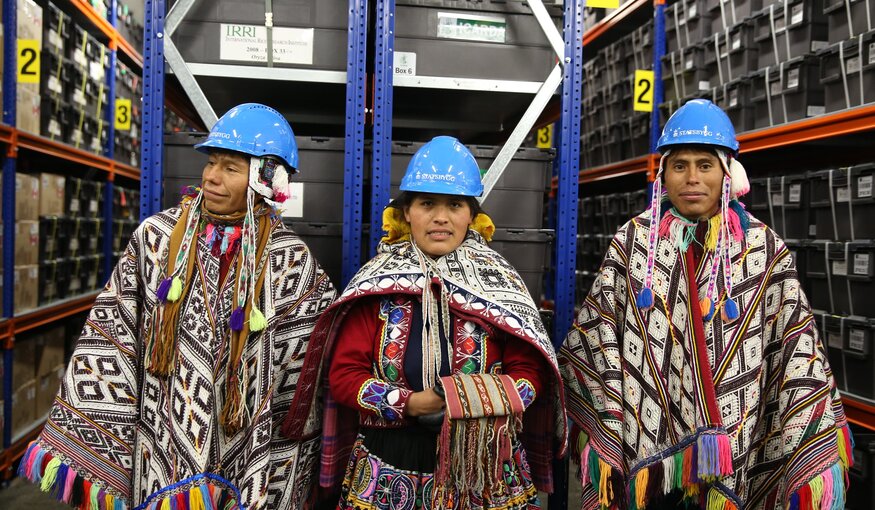Strengthening the Inclusion of Marginalized Groups in Ex Situ Conservation of Crop Diversity

The Peruvian delegation from Parque de la Papa desposits seeds in the Svalbard Global Seed Vault. Photo: Crop Trust
12 June 2023
Farmers have selected, exchanged and conserved crop diversity for millennia, and continue to do so, because they know that their food security and livelihoods depend on it. Genebanks play an important supporting role to the conservation efforts of farmers, not only by backing up their crop diversity but also by making it more easily available to researchers and plant breeders all around the world. These in turn produce new diversity that farmers can add to their menu of options to cope with new challenges.
These two systems – on farm and ex situ conservation – are often described as complementary, and mutually interdependent.
But how involved really are farmers in the activities of genebanks? And, in particular, what can genebanks do for those smallholder farmers who have less access to resources such as wealth, land and education? How can genebanks make sure that they serve marginalized groups like women, youth and Indigenous people?
This is the subject of a report by Sophia Lüttringhaus, an expert in the field, that she prepared in 2022 as part of the project ‘Strategic Development of the Crop Trust’, implemented by the Deutsche Gesellschaft für Internationale Zusammenarbeit (GIZ) GmbH and the Global Crop Diversity Trust (Crop Trust).
Dr Lüttringhaus found that the degree of inclusiveness of genebanks towards marginalized groups depends on their mandate, legal framework, and institutional context. While some acknowledge the importance of actively including marginalized smallholder farmers in their work, the intersectionality of marginalization and the specific needs of different marginalized groups are often overlooked. Funding constraints, lack of expertise, and a focus on scale limit the integration of marginalized groups into genebank activities.
Nevertheless, specific initiatives by international genebanks have sometimes targeted marginalized groups, though this has not been a consistent focus. National genebanks have closer connections to farmers, allowing for more direct interaction to address the specific needs of marginalized groups, but again there are few examples of a systematic, deliberate focus on their needs. Among the activities of genebanks, the return of lost landraces to local communities, emergency seed interventions, participatory evaluation of germplasm and plant breeding, and collaboration with community seedbanks have perhaps the greatest potential to directly benefit marginalized groups. But they need to be properly thought out, and resourced.
The report found that genebanks can strengthen the role of marginalized groups in ex situ conservation in a number of ways. Dr Lüttringhaus recommends collaborating with social scientists to ensure that marginalized groups are included in project design to represent their needs and knowledge, coupled with capacity development to enhance their participation and self-representation. Prioritizing the conservation of so-called orphan crops is also important, as marginalized groups often grown marginalized crops on marginal land. And including in genebank information systems data specifically relevant to women and children, including Indigenous knowledge, might well facilitate benefits accruing to such groups more systematically.
Genebanks can test options to collaborate with marginalized groups through dedicated farmer field days, demonstration fields, and direct distributions, for example. But perhaps the best way to start would be by hiring more diverse staff, and training them in the intricacies of diversity, equity and inclusion described in this report.

